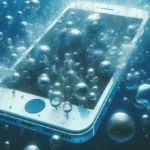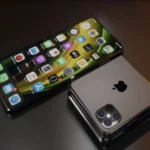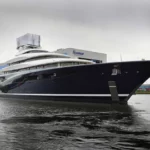Huawei Technologies aims to set up 100,000 High-speed EV charging stations across China in the coming year. These stations will be equipped with units that are more than double the speed of Tesla’s chargers. This move is expected to significantly enhance the infrastructure for fast-charging vehicles made by Chinese automakers.
In Huawei’s hometown of Shenzhen, there’s a charging station in a shopping center parking lot boasting the ability to add 1 kilometer of range for every second of charging. Under the Huawei logo, you’ll spot “600kW,” indicating its power.
This High-speed EV charging was created by Huawei’s subsidiary, Huawei Digital Power. While initially focused on making charger parts, they’re now diving into making complete charging stations.
At an event in Hangzhou in mid-December, Liu Dawei from Huawei Digital Power explained that they aim for 1 kilometer per second charging to mimic the quick refueling experience of gas-powered vehicles.
Huawei plans to sell these chargers to charging facility operators. By the end of 2024, they intend to install 100,000 units, including 250-kilowatt chargers, at places like commercial centers and highway service areas.
According to Huawei’s calculations, if you have an electric car with an 80-kilowatt-hour battery and a range of 600 kilometers, their High-speed EV charging could theoretically fully charge your car in around 8 minutes. However, the actual time might vary based on temperature and your battery’s current charge.
Huawei’s charger is incredibly powerful, with an output of 600 kilowatts, making it one of the most potent chargers globally. In comparison, Tesla’s Supercharger in China has a maximum output of 250 kilowatts. So, under the same circumstances as Huawei’s calculation, using Tesla’s charger would take approximately 19 minutes to charge your car entirely.
Huawei claims that its charger is versatile and can work with any electric vehicle, including those made by Tesla.
When you increase a charger’s output, it tends to generate more heat. Huawei tackled this challenge by implementing a cooling system that uses liquid coolant, which differs from most chargers’ cooling fans.
Although Huawei is primarily known for its telecommunications business, it ventures into cellular base stations and solar power generation. In developing its EV chargers, it seems to have drawn on its expertise in communications and weather-resistant technology from these areas.
Their decision to enter the charger market stems from the growing demand for equipment that can keep up with advancements in battery performance.
In August, CATL, a leading battery manufacturer, unveiled a new battery capable of charging 400 kilometers of range in 10 minutes. Several companies, including state-owned Chery Automobile and an EV startup working with Huawei on autonomous driving systems, have used this battery.
By the end of 2023, China had 2.7 million public charging stations, expected to increase by 40% in 2024. However, only some of these stations will support fast charging.
Given the rising number of EVs requiring fast charging, Huawei believes the existing charging stations are insufficient.
While Tesla has pioneered the development of a fast charging network, most of its stations can only charge Tesla vehicles. Although the company announced plans to open some stations to other EVs in 2023, this only applies to around 20% of its stations.
On the other hand, Chinese EV startup Xpeng Motors has installed ultra-fast chargers with a maximum output of 480 kW at over 200 locations as of August 2023. Major charging station operators like TELD and Star Charge have also rolled out ultra-fast chargers.
If Huawei’s chargers, which are compatible with all automakers, become widespread, it could boost Chinese EV companies producing fast-charging-enabled vehicles.
For now, Huawei will concentrate on the domestic market but hasn’t considered expanding overseas.
Here are the overall details:
| Aspect | Details |
|---|---|
| Charger Compatibility | Huawei’s charger is compatible with all electric vehicles, including Tesla’s. |
| Cooling System | Huawei’s charger is compatible with all-electric vehicles, including Tesla’s. |
| Huawei’s Business Ventures | Unlike traditional cooling fans, Huawei uses a liquid coolant-based cooling system for its chargers. |
| Market Demand | The entry into the charger market is driven by the increasing need for equipment that can match advancements in battery performance. |
| Battery Advancements | CATL introduced a battery capable of charging 400 kilometers of range in 10 minutes, driving demand for fast-charging infrastructure. |
| Current Charging Infrastructure | China had 2.7 million public charging stations at the end of 2023, with a projected 40% increase in 2024. |
| Charging Station Compatibility | Despite Tesla’s extensive network, only around 20% of its stations are compatible with non-Tesla EVs. |
| Competitor Offerings | Xpeng Motors and major charging station operators like TELD and Star Charge have also rolled out ultra-fast chargers. |
| Potential Market Impact | Huawei’s widespread charger adoption could benefit Chinese EV companies producing fast-charging-enabled vehicles. |
| Market Focus and Expansion Plans | Beyond telecommunications, Huawei is involved in cellular base stations, solar power generation, and electric vehicle chargers. |









